House fit for a president
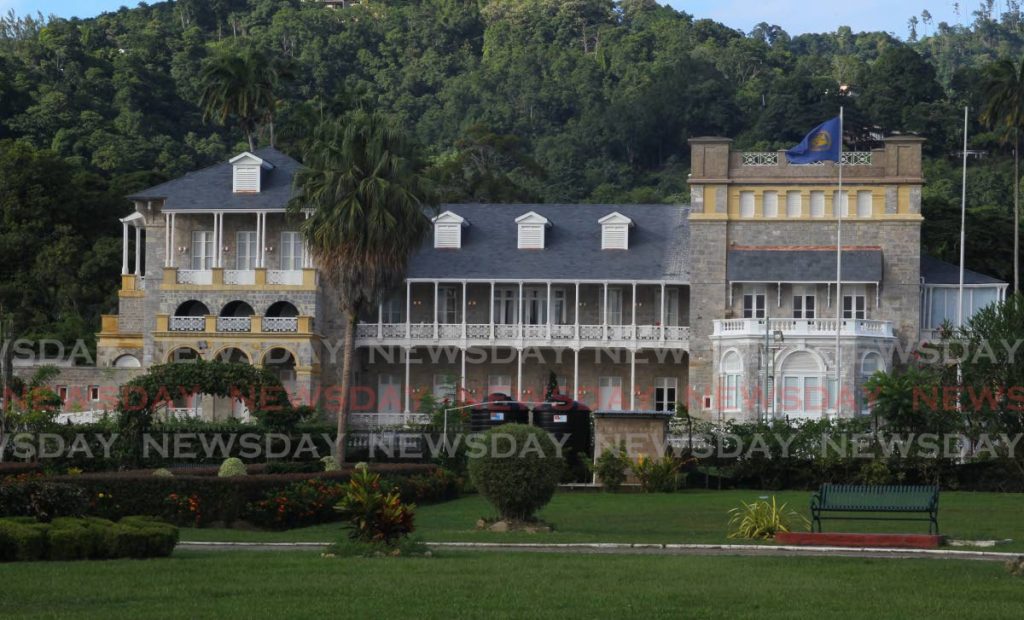
Restoring an icon of TT’s architectural history is no easy task, but on Friday, the Urban Development Corporation (Udecott) and contractors Unicom Ltd handed over a refurbished and rehabilitated President’s House to the Office of the Prime Minister (OPM).
The OPM handed it over to President Paula-Mae Weekes, who hosted a reception for the reopening of the historic house on Tuesday.
“It is an occasion for celebration,” Weekes said, as she led guests in a toast to the renovated official residence. "The 21st-century edition of President's House."
The building was built in 1876 in the Victorian style on land that was once part of the Hollandais estate. Part of the land had been bought in 1818 by Sir Ralph Woodford, who was the governor of the island, then a British territory. The land was to be used to construct an earlier version of the Governor’s House and the rest for the Royal Botanic Gardens.
From 1876 to April 1958, the house was used as the home of the governor and briefly as the residence of the Governor General of the West Indies Federation. The federation was dissolved in May 1962, and in August that year, TT became independent. From independence until 1965, the building was a museum and art gallery. In 1965, TT’s last governor and first governor-general, Sir Solomon Hochoy, moved back into the house, followed by Sir Ellis Clarke, who, on the country’s transition to a republic in 1976, was the first president. The Governor-General’s House was thus renamed President’s House.
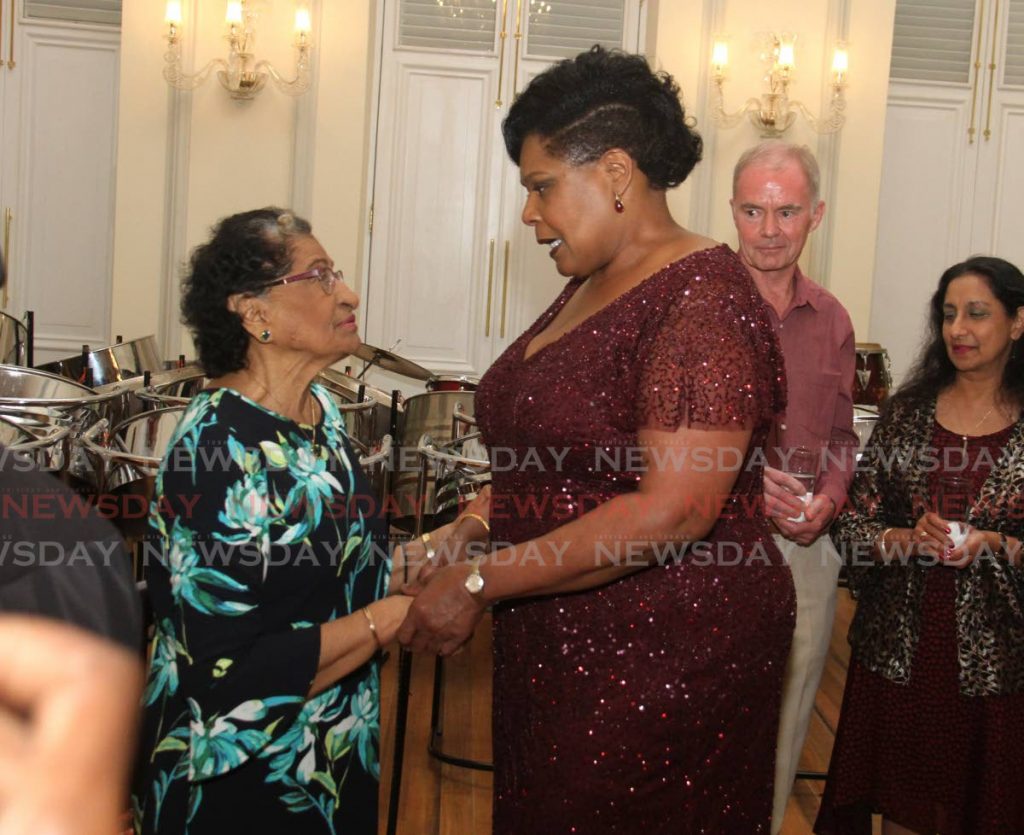
Presidents Noor Hassanali and ANR Robinson lived at President’s House. In 2010, during an earthquake, the second floor of the building collapsed. Presidnt George Maxwell Richards and his family had been living in the cottage in the grounds and not the main house at the time, and stayed there until his term in office was up in 2013. Incoming president Anthony Carmona and his family lived at Flagstaff Hill, since President’s House was unfit to live in. President Weekes lives with her mother in Petit Valley.
There have been attempts to restore President’s House before, but it was only in 2018 that the contract was granted to Unicom to complete the work. Supervised by Udecott, Unicom had 18 months and a budget of $89 million to restore the building. For the most part, the company’s owner, Marcel Labban, said, everything was completed on time and within budget.
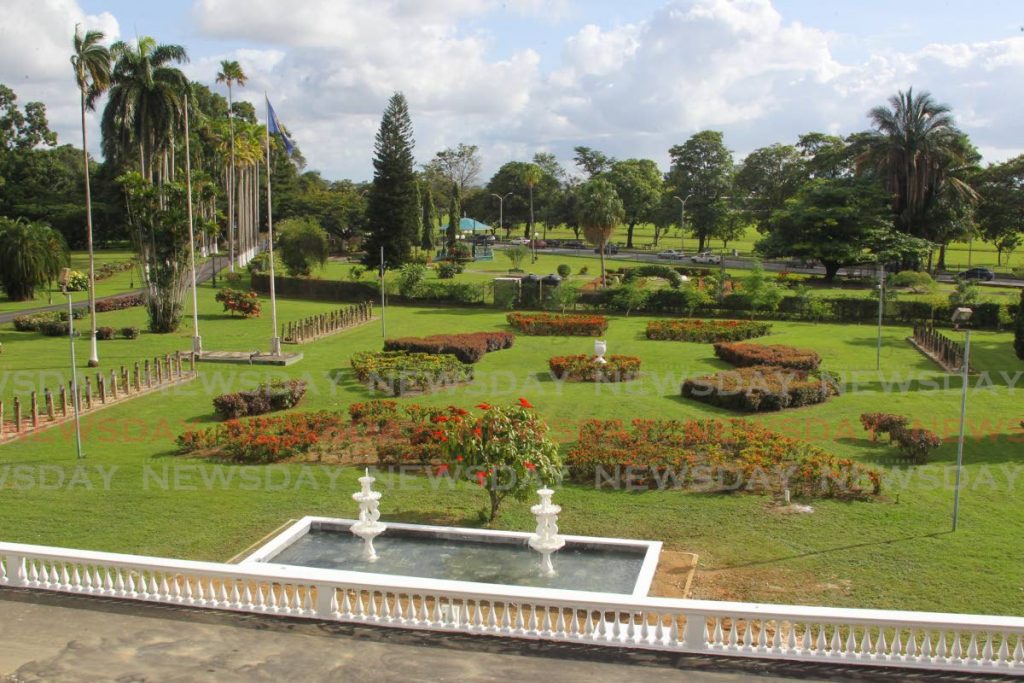
There was some delay, though, when in August 2018, a 6.9 earthquake caused even more damage to the unsupported structure, leading engineers to head back to the drawing board to redesign the building. The design team included restoration specialists from Colombia who worked with local engineers to come up with a stable design that had to be vetted and approved by Udecott.
The whole building is shear wall construction that supports the existing structure. This helps with stability, making the building more resistant to damage from earthquakes and wind. It also has a completely new foundation and a steel roof reinforced with ring beans. A central air conditioning system was also installed. There’s disability access, via two lifts and a wheelchair ramp.
For the interior, the contractors, architects and designers tried to maintain the historical integrity, recreating and restoring finishings, including flooring, ceilings, mouldings and even tiling reminiscent of the house's former glory.
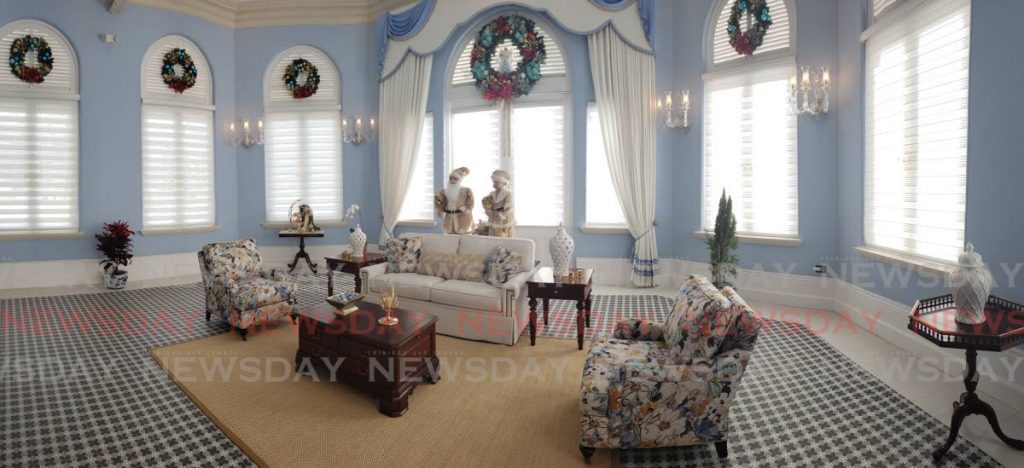
Architect and historical conservation consultant Rudylynn De Four Roberts emphasised that while the building was rebuilt using modern techniques it still qualified as a heritage building.
“The section you’re standing in right now had collapsed,” Roberts told the media, standing in the ballroom. “This area is all new. Everything else – the original stonework, verandas, cast iron, all the detailing, the ceiling – except that some parts that were pulled down to create space for duct work – even the moulding (is restored).”
Most of the moulding work was done on site and she praised the Colombian team, which she noted had shared its experience with the local teams, ensuring a transfer of knowledge.
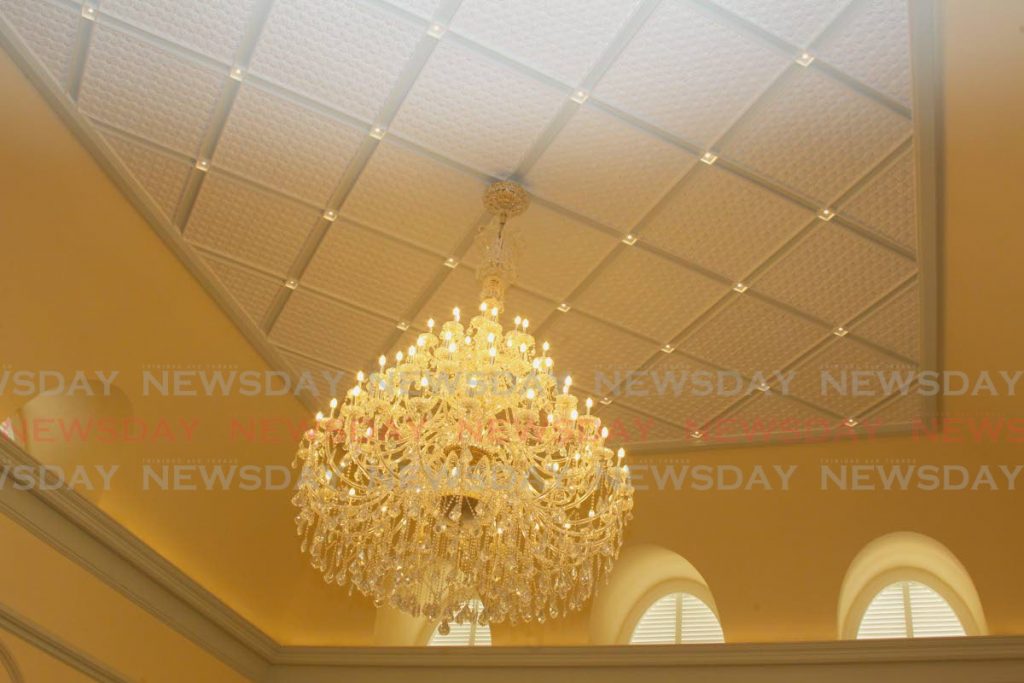
At the official handover ceremony, the Prime Minister admitted that initially the repairs had seemed daunting. But now, he said, “Once restored, it has restored the missing jewel in the crown. This is the largest jewel in the crown” – apparently referring to the other historic buildings around Queen’s Park Savannah – including the recently restored Magnificent Seven buildings on Queen's Park West, Whitehall (now his office), and its neighbour, Castle Killarney (formerly Stollmeyer's Castle). The Red House, the seat of Parliament, will re-open in January. “I hope you feel the same sense of pride I do. After years we are able to do business at the house of the President."
The media were allowed a first look at the building last Thursday. The building comprises three levels: the basement, the ground floor, the first floor and the second floor. The tour began on the first floor in the grand foyer, through to the public sitting room and the grand ballroom. Then it was to the grand dining room, which can seat 60-80 people, then the private dining room, which is more intimate.
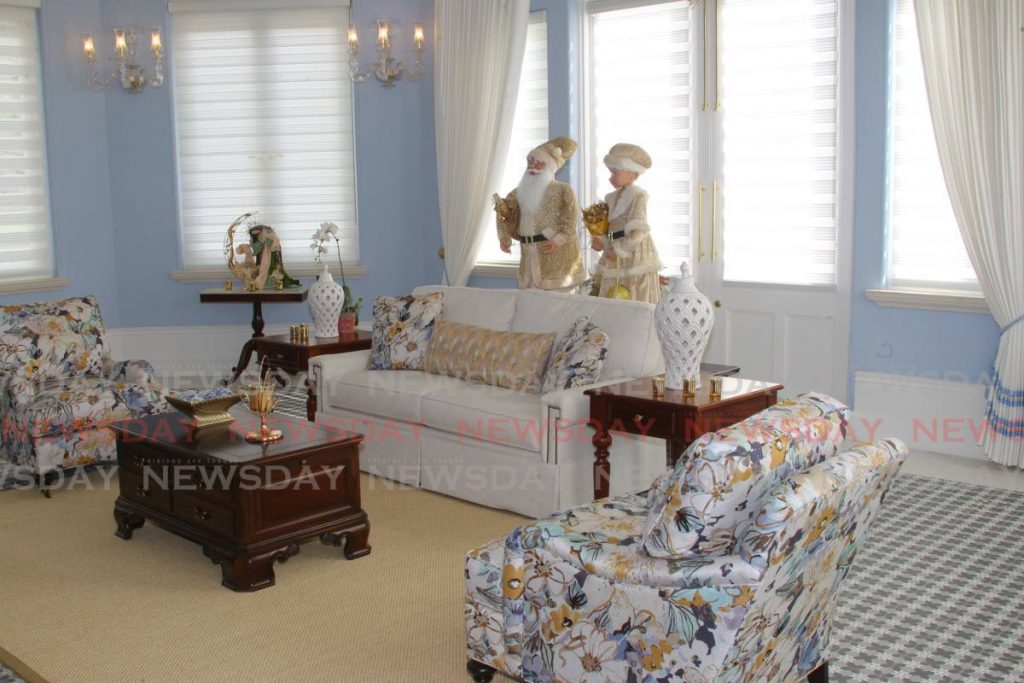
The tour was led by Udecott architect Helena Van Lare, who also supervised the renovation of Whitehall. Van Lare noted that there was some sharing of furniture, both out of practicality and to cut costs. The chairs in the dining room, for example, were borrowed from Whitehall while the original regency chairs were being refurbished.
Most of the furniture was British colonial reproduction furniture bought from South Carolina in the US, while some of the rugs were found in storage and the rest bought at very good discounted prices. There were also pieces throughout, like cabinets and cupboards, brought over as excess pieces from Killarney. The light fixtures, including a grand chandelier in the foyer, were all new.

The President’s private quarters were also on the first floor, but for privacy, the tour did not allow viewing. Also on the ground floor was the gift receiving room, which had been restored with gypsum panelling to allow for the new air conditioning vents.
Then it was up to the staircase to the first floor. The first stop was the terrace where Sir Ellis would have his breakfast.
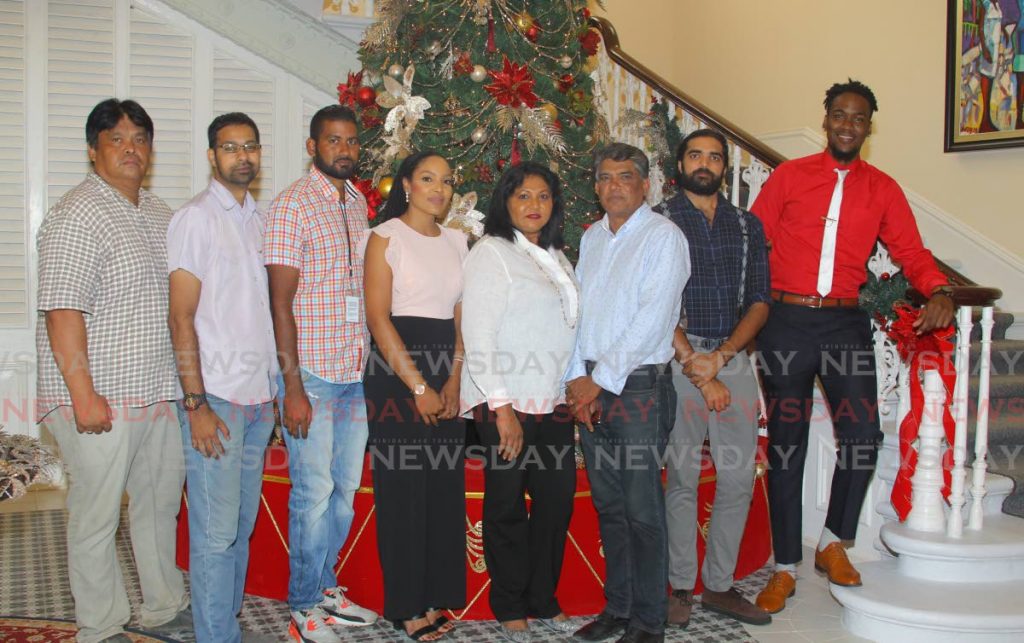
“I think he’d be quite proud to see how it was restored,” Van Lare said.
A new room, the Bamboo Room, was named after the material used to make the furniture. Van Lare noted that one of the redesigns was to make the building airy and to expose the beautiful ironwork that had been hidden behind low walls. The walls were removed and floor-to-ceiling glazing (glass) installed. The verandas around the building were all very similar, she said, and for the most part are the restored originals.
The first floor was originally just bedrooms and bathrooms. Now it houses a library (the old library was on the ground floor, but was converted to the President’s private living room), a gym (originally a small kitchen), and the acting president’s quarters. One of the perks of being acting president is being able to stay in President’s House, and the suite includes a private sitting room and a breakfast/lunch room that overlooks the Queen’s Park Savannah.
But the real treat is the guest bedroom. Designworks Ltd, chief interior designers on the project, had already bought most of the furniture to decorate the building, but when a prominent local family contacted the firm about selling some pieces in its collection, the designers’ interest was piqued.
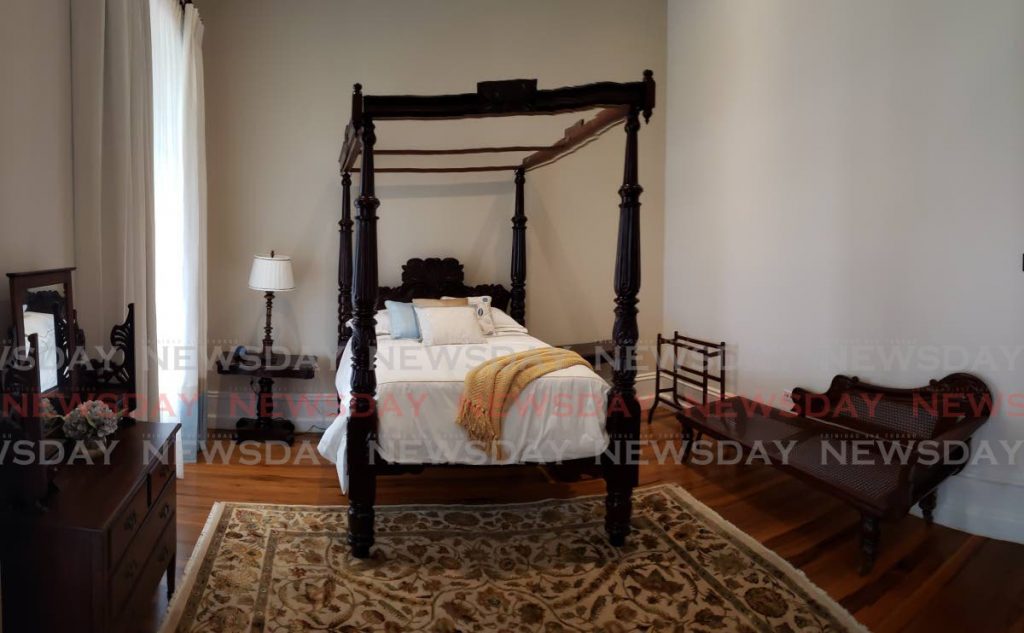
guest bedroom at President’s House. - ROGER JACOB
“In an ideal world, the whole President’s House would be filled with historical furniture,” said Alison Grosberg, principal architect at Designworks.
The find was exciting but since most of the furniture had already been bought, not much could be done.
“We thought about it carefully and decided that we would do a historical room. Udecott supported the idea. So in this room, all the furniture is genuine West Indian/Trinidadian antiques.”
The centrepiece of the room is a bed well over 100 years old, she said, that was originally bought at auction from Knowsley.
“It’s very important that we have this room to showcase our tradition and culture,” she said.
Most of the furniture is made from high-quality Trinidad mahogany and reflects the skill of local artisans who had become quite skilled at creating copies of popular European furniture styles. There's also a chaise longue made from cane and a gentleman’s cabinet, also made from mahogany. The best part, though, is that the room is a working exhibit, so lucky guests invited to stay over at President’s House have a chance to sleep in history.
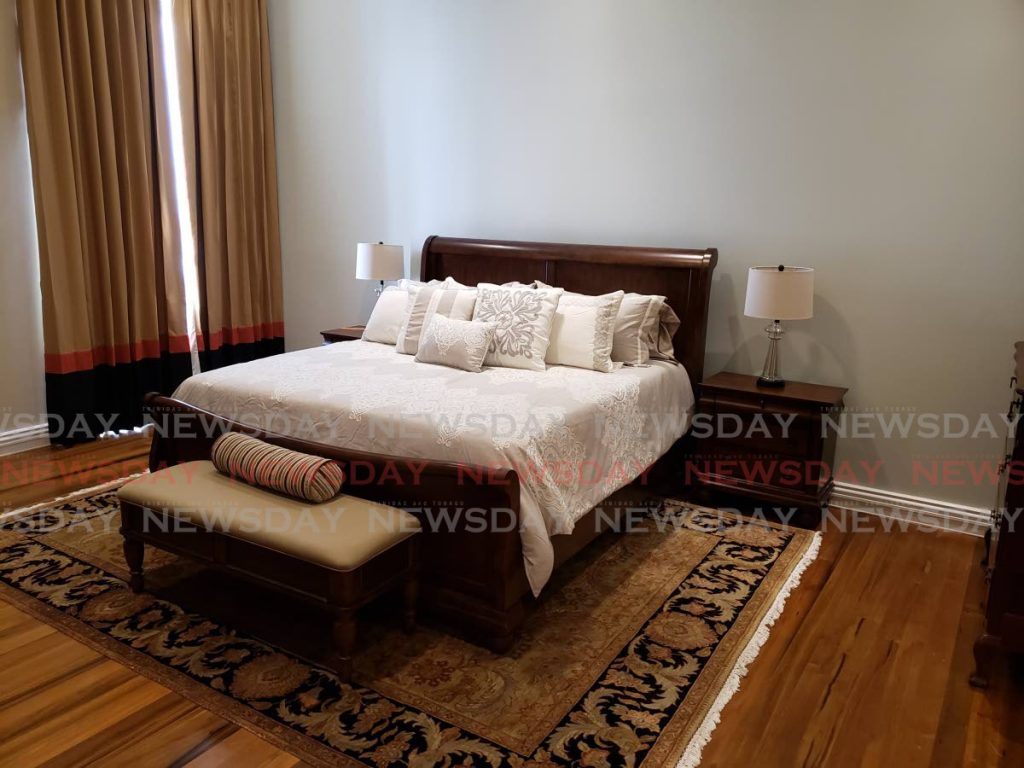
The second floor was probably the most difficult to reconstruct because that’s the part that was most heavily damaged by the earthquakes. Van Lare recalled how precarious the site visit the day after the earthquake was to assess the damage. Now the space houses the comptroller of the household’s office and rooms for the President’s aide-de-camp (personal security).
While there’s still some superficial work to be done, especially on the grounds, Van Lare noted as well that as a nod to the old building, some of old rubble, including bricks, had been used to create planters around some of the decorative plants. The fountain also got an upgrade to bring its aesthetic more in line with the traditional look of the building.

Roberts, who was intimately involved in ensuring the accuracy of the restoration, said she was happy with the final product.
“I remember coming here the day after that collapse (last year) and I was in tears. Everybody was just so upset. And I am so happy and so pleased with how the building has been brought back.”
With reporting by Sean Douglas


Comments
"House fit for a president"